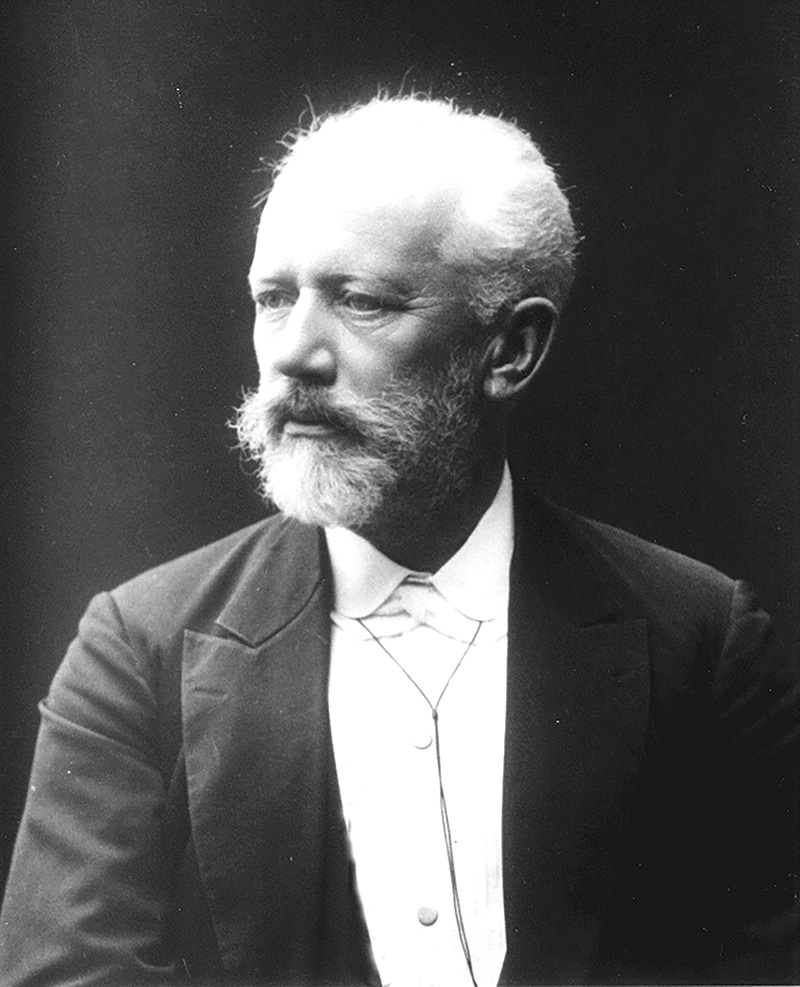Piotr Ilyich Tchaikovsky

- Born: May 7, 1840 in Votkinsk, Russia
- Died: November 6, 1893 in St. Petersburg, Russia
Variations on a Rococo Theme for Cello and Orchestra, Op. 33
- Composed: Between December 1876 and March 1877
- Premiere: February 1901, Frank Van der Stucken conducting; Hugo Becker, cellist
- Duration: approx. 19 min
Tchaikovsky felt an intense nostalgia for classical-era music, particularly that of Mozart. He found in earlier music a perfection that he believed his generation had lost. In contrast, he found much of the music by his contemporaries vulgar and debased. During his frequent bouts with depression, Tchaikovsky sometimes poured out his feelings in his music, but at other times he turned for escape to the sunny atmosphere of the classic, or rococo, style. For him rococo music represented a carefree world that was out of his reach except through composition.
Tchaikovsky modeled much of his neo-classic music after that of Mozart. He even arranged some of Mozart’s minor works as his own Fourth Orchestral Suite. The first time he wrote neo-classic music was in 1874: the ball scene in the opera Vakula the Smith contains a little minuet that, as an evocation of the classic style, is a gem. Pleased with this recreation of the rococo, Tchaikovsky was eager to compose a more extensive work that approached classical ideals. When he decided to write a piece for the cellist Vasily Fitzenhagen, he saw a perfect opportunity to work in a neo-rococo manner: since the cello is a difficult instrument to accompany with an orchestra (its middle register is easily covered), he used a modest ensemble similar to those common in the 18th century.
We usually associate the term “neo-classicism” with music of the 20th century, whose principal neo-classicist was Stravinsky. Stravinsky composed many modern reinterpretations of classical forms, sounds, procedures and aesthetics. Tchaikovsky’s Rococo Variations, however, shows that the neo-classic impulse is not solely a recent phenomenon. His admiration of Mozart led not to imitation but to a personal adaptation of Mozart’s ideals, sonorities and principles of balance. The subject of this music is neither the idiom of Mozart nor that of Tchaikovsky, but the former one interpreted, adopted and personalized by the latter. The Rococo Variations is therefore a sophisticated work, asking of its listeners an informed historical perspective. It is also a delightfully tuneful work that can readily be appreciated for its own beauties.
While he was working on the variations, Tchaikovsky received several commissions from a wealthy widow in her mid-40s named Nadezhda von Meck. This shrewd businesswoman, mother of 11 children and eccentric patron of the arts wrote to the composer: “with your music my life is made easier and more pleasant.” Tchaikovsky responded openly and warmly, fulfilling the commissions promptly and answering the letters. From these beginnings grew one of the oddest and most celebrated friendships in history. Von Meck and Tchaikovsky exchanged some 1,100 letters, but they never met. They shared such intimacies that they could not bear the embarrassment of actually seeing each other.
Von Meck supported Tchaikovsky with commissions, then with loans which he was not expected to pay back and finally with a regular monthly allowance. The composer felt that she was a true friend, more than a source of funds needed to support a mismanaged life. The Rococo Variations became the last work of Tchaikovsky written without the influence of von Meck, at least until she suddenly broke off relations with him in 1890 because of her bankruptcy.
—Jonathan D. Kramer